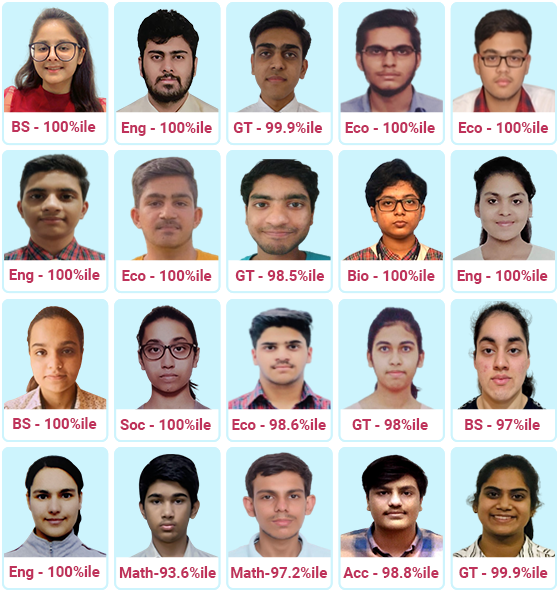CUET syllabus aligns with 12th NCERT curriculum, so balance is essential.
250+ top institutions, including DU, JNU, AMU etc. consider CUET instead of Boards.
Most boards exams are increasing MCQ weightage hence, one must practice the format.
Get comfortable with the computer based interface for 100% exam readiness.
First to introduce CUET + Boards tailored program and study material
We Focus on Your Growth, Not Just Numbers in batches
We make sure you practice during the class & comply the homework
2+2 Academic Model for an Immersive Physical Classroom Experience at home
We're Not Just Instructors; We're Your Learning Guides, get 1-1 mentorship
With updated & comprehensive content, our books are a game-changer
One stop solution to ace boards and pave the way to elite universities such as DU, JNU, BHU & more than 250 others. Start early, and outsmart the competition.


Our expert faculty, well researched curriculum, cutting-edge resources, and personalized approach ensure that you are fully equipped to achieve your dream career.
Our well-researched curriculum and session plan are designed in such a way that course will start from the basics and gradually cover all the advanced concepts to equip you with the knowledge and skills needed to conquer the CUET and Boards

Our Hitbullseye team is a league of extraordinary mentors, with IITs, IIMs Alumni, CAs, and industry experts in tow. When it comes to CUET Prep , we're the ones in the know!
Gold Medalists
PhD Scholars
Published Authors
Math Wizards
IIT-IIM Alumni
Practicing CAs




Wordsmith Wizard
Teaching hours
42k hrsResults Delivered
4.5k+

An illustrious educator
Teaching hours
44k hrsResults Delivered
4.6k+

Knowledge Guru
Teaching hours
16k hrsResults Delivered
1.9k+

Erudite Legal Master
Teaching hours
15k hrsResults Delivered
3.1k+

Physics Mentor
Teaching hours
15k hrsResults Delivered
3.1k+

Economics Master
Teaching hours
15k hrsResults Delivered
3.1k+

Accountancy Master
Teaching hours
20k hrsResults Delivered
4.1k+

Maths Master
Teaching hours
15k hrsResults Delivered
3.1k+

Business Studies Master
Teaching hours
15k hrsResults Delivered
3.1k+

Chemistry Mentor
Teaching hours
15k hrsResults Delivered
3.1k+

Biology Mentor
Teaching hours
15k hrsResults Delivered
3.1k+Hitbullseye's CUET & Boards Course is the secret to your success, with its extensive study materials and engaging learning modules.
Choose the timings of the session at your convenience
Get trained by IITians, IIMians and industry experts
Get exclusive doubt and recap classes
Well-curated and structured study material as per the latest exam pattern
We offer more than just academic curriculum to ensure 100% exam readiness. Our tailored workshops and prep resources are designed to meet the unique needs of each individual student & empower them to succeed and achieve their goals.
Master Trainers from IITs, IIMs mentoring for custom prep needs
Weekly Current Affairs & Monthly Magazines
Real time classroom analytics for improvement
Curriculum based on NCERT syllabus
You can't get a better hand-holding towards a 99%ile than this. Our structured courses with unique teaching methodology ensures an ultimate online preparation experience
Hear from the Hitbullseye achievers who scored a perfect 100 %ile in CUET 2022 about how Hitbullseye's assistance and guidance were integral to their success in preparing for the exam. Trust the dream team and be the next success story.
Our students receive 1000s of calls from Top Colleges every year. You can be the next one!